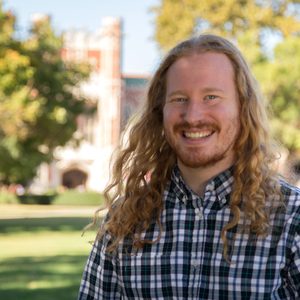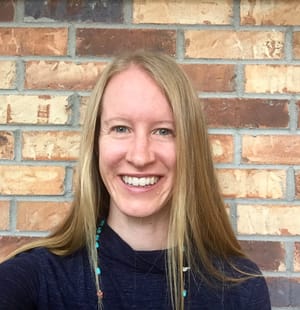I've thoroughly enjoyed my time in the LDT program. From the courses I got to experience (especially INTE 5320 Games & Learning being one I joined the program to take), the wonderful instructors (all of which felt like they wanted their students to grow and succeed), and the opportunities to work on projects that mattered to me (specifically my work with the Learning Agency). For all the work this felt like a positive investment for me professionally. With that said, the single-greatest factor that impacted my enjoyment of this program wasn't related to all the other wonderful experiences I had. It was a friend I made during my time in the program that elevated the entire experience. It was thanks to Ashley that I made it through this program more enriched.
When I joined the program in Fall 2022, I was enrolled in INTE 5360 Critical Digital Pedagogy and INTE 5200 Designing Online Learning Experiences. By happenstance I shared both of these classes with Ashley. We didn't end up interacting outside of our discussion posts for much of the semester. But near the end Ashley joined my synchronous session on the intersection of games and Critical Digital Pedagogy where we explored what collaborative storytelling brings to building community and the realm of Gameful, Critical Digital Pedagogy. This synchronous connection was a powerful catalyst for us going forward. Similarly, we were tasked with giving feedback on each other's final projects in the INTE 5200 course and this only furthered our familiarity towards the end of the year. Our transition from acquaintances to friends occurred the following semester.
During Spring 2023, we worked on our first group project together in the INTE 5670 Crafting Synchronous Learning course. We were tasked with hosting webinars as part of our projects. This gave us the opportunity to work together and learn that we were compatible professional partners. This burgeoning friendship was supported by our heavy usage of Slack and eventually text messaging as we began to discuss beyond school and connect outside of the context of homework.
Partway through our time in the LDT program we recognized that our friendship was a cornerstone of our experience. It allowed us to commiserate and lean on each other when work became more onerous. As often as possible, we made sure to group up for projects and peer feedback. To us, it was our friendship, more than anything, that helped us get through the program.
When I imagine what my time in the program would have looked like, I recognize I had positive connections with my instructors and some of my other peers, but those interactions were through the filter of school. Would I have found another friend without meeting Ashley? It is entirely possible, but I am certain that without at least one genuine connection my time in the LDT program would have been less rich.
Where does that leave us?
For those that teach and mentor in the LDT program, I offer this call-to-action to help students establish connections in your courses. To some degree this can be far more valuable and lasting than any well designed activity or providing the perfect resource. In practice, these connections occurred for me through virtual, synchronous meetings, our messaging backchannels (Slack, Teams, and texting were all used in LDT), small group projects with one partner, and during some of the Canvas discussions.
I recognize this is no easy task. Fostering organic community is already tough and doing so in semester time chunks is even more challenging. Not to mention, the busier students become the less likely they may be to engage in community building activities. There were moments during the beginning of the Fall 2022 semester where I craved a synchronous icebreaker activity to get to know my peers. This desire was partially satiated by synchronous live watch parties we had around documentaries. That was one of the first moments where I felt more connected with my peers. Once my friendship with Ashley was established these course community building activities were not as necessary for me to feel connected in the program.
For my peers, I would encourage you to actively seek out connections in your courses. If you enjoy your time with specific group members, strengthen those connections by staying in touch or working on future projects together. Initiate discussions, reach out to others, and celebrate accomplishments together. These interactions are the threads that bind us together, and the more that occur, the tighter knit our friendships and community can be. In fact, this is my one piece of advice I'd leave for future students of LDT. Initiate conversations, show people that you care about them, be vulnerable and take a leap of faith into the vast sea of possible friendships. They will enrich your time in the program and potentially well beyond!











Member discussion